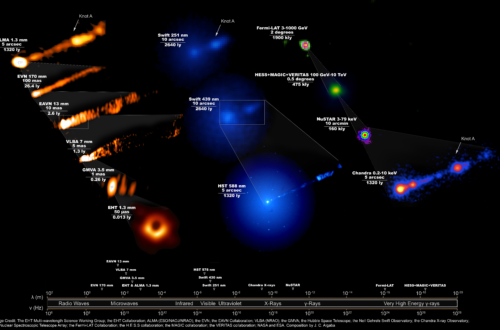Ok, I realize that my language here is a bit politically incorrect, but sometimes you just can’t say it any other way.
Prof. Fiona Harrison kicks ass! She’s professor and the current department chair at the Astronomy/Physics Dept at Caltech, one of the top universities in the world. But more importantly, she designed a friggin’ space X-ray observatory, that had one of the most complicated launch manoeuvres possible, and it has worked so spectacularly that even as a small “cheap” mission it’s revolutionised my field! Today she was awarded a big prize by the international Committee on Space Research (COSPAR). Here’s the motivation, but it just makes me proud of her, and a great milestone for women in science:
“Fiona Harrison is the leader of NASA’s NuSTAR (Nuclear Spectroscopic Telescope Array) mission, launched in June 2012. As the first focusing telescope operating in the hard X-ray band, NUSTAR is a hundred times more sensitive than any previous spacecraft in the 15 – 79 KeV spectral band. This has opened a new window on the Universe.
Among the most impressive results of NUSTAR and of Professor Harrison’s group are: 1) The first map of the Cas A supernova remnant in the radioactive line of Ti-44. The Ti-44 line was also detected by NUSTAR from the remnant of supernova 1987A in the Large Magellanic Cloud. 2) Due to the unprecedented angular and timing resolution, the NUSTAR team discovered emission from a magnetar – a neutron star with a magnetic field exceeding 10^14 Gauss very near the center of the Milky Way. This is the first pulsar discovered in the vicinity of our central Black Hole. 3) The majority of scientists believed that ultra-luminous X-ray sources in other galaxies are the black holes having a mass exceeding 1000 solar masses. Such black holes are impossible to create as a result of stellar evolution. The group led by Fiona Harrison discovered that the well-known ULX in the star forming galaxy M82 is an X-ray pulsar of period 1.37 seconds, and is one of two stars in the binary with a period of three days. We know that pulsars are neutron stars having masses usually less than 2 solar masses. This source has, at a maximum, the X-ray luminosity exceeding a hundred times the Eddington critical luminosity, i.e. the radiation force on the surface of this accreting neutron star exceeds a hundred times the gravitational attraction to the neutron star, an observation that has yet to find adequate theoretical explanation.
These and many other discoveries make Fiona Harrison one of the most active leaders of modern high energy astrophysics.”



